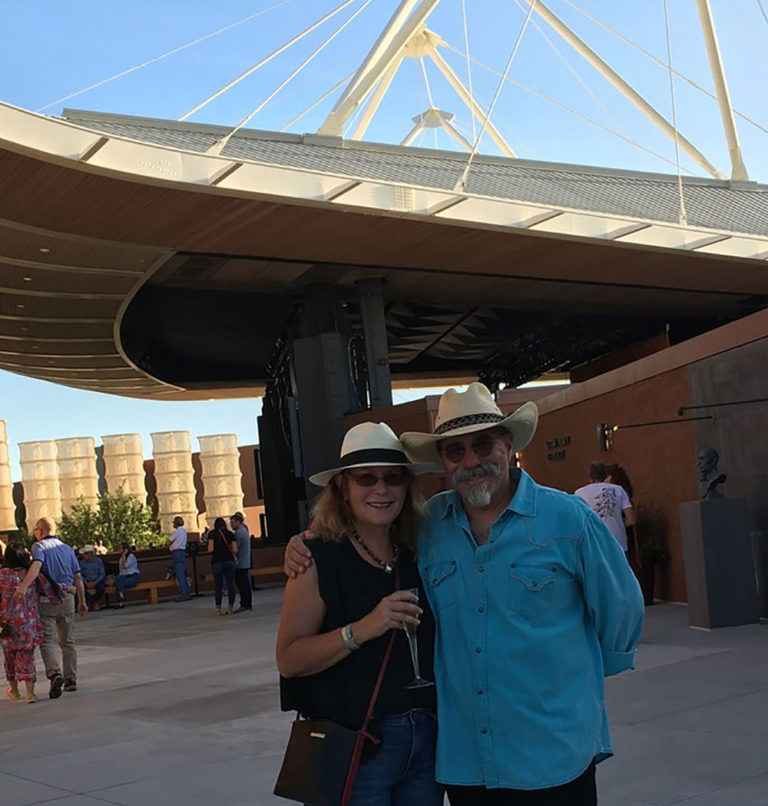Interview: Nepal Art Supporter Michelle Page
Michelle Page has been traveling to Nepal since 1986. On her first visit, she noticed metal signs that read “Beware of Dog,” hung on many gates in Nepal. She soon found that this ancient tradition of sign painting was disappearing. In 2007, she decided to combine her love of animals with this whimsical art form and created Danger Dogs from Nepal – Folk art from the Himalayas! It gives animal lovers the chance to have a painting of their own pooch or kitty created by a Nepal local, while putting an artist to work. Michelle hires local artists from Nepal, Kathmandu Valley, Pokhara, Darbang, and Jomsom. This fair trade art venture has become a win-win collaboration.
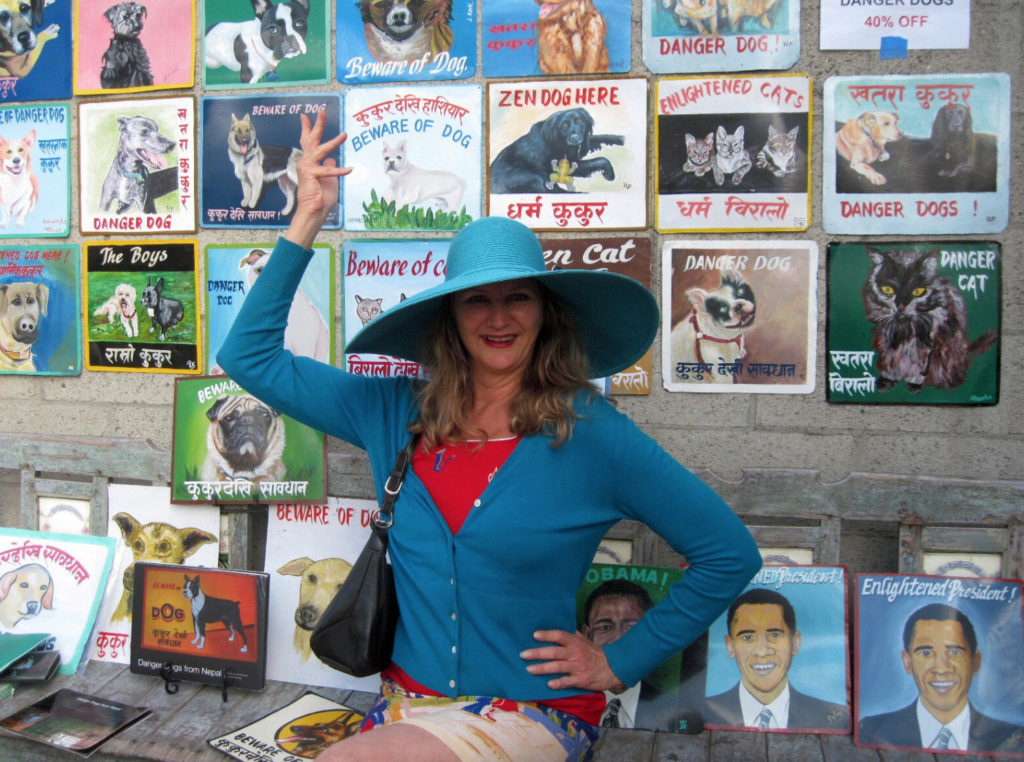
Twice a year Michelle returns – once for the Tibetan New Year (Lhosar) in February or March, so she can hire local artists to create these one-of-a-kind gifts for Mother’s Day and Father’s Day. She will arrive for her second annual trip in October, between two of the largest Nepal festivals – Dashain (Bijaya Dashami), and Tihar (Deepawali). The latter is a five-day festival that celebrates various animals. Day two is dubbed Kukur Tihar/Day of the Dog. It celebrates dogs who are adorned with garlands and indulged with treats. Michelle returns to California in December (bringing gifts ordered months prior), just in time for the holidays. In 2015 a devastating earthquake hit, while Michelle and her husband were visiting Nepal, The LA Times ran a story that they were missing. Many of us were in a panic…thank goodness they came back safe. The LA Times did run a follow up story. Michelle put together a fundraiser to help the Nepal people that she loves so much. I interviewed her for my article published in the Argonaut Newspaper.
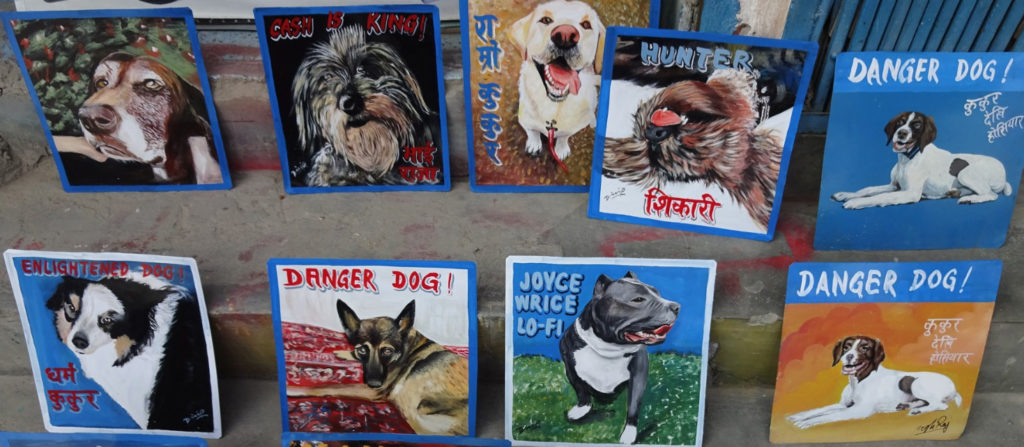
Q: How has Danger Dogs from Nepal grown through the years?
A: I got lucky early on when Ed Moses bought 2 paintings and showed them to a gallerist from Ojai who gave me my first exhibit. I sold 15 paintings that first evening. I thought the art business was easy. Little did I know…at this point, after 12 years, many of my first clients’ pets have gone over the rainbow bridge and they are reordering for their latest pets. I have also been lucky with some very nice press over the years.
Q: Are there any hand crafted signs still being made?
A: Unfortunately, I am the only one that the Nepali signboard artists are still hand painting for. Everyone in Nepal uses flex, a plastic sign that looks terrible and does not hold up as well as the traditional hand painted signs on metal.
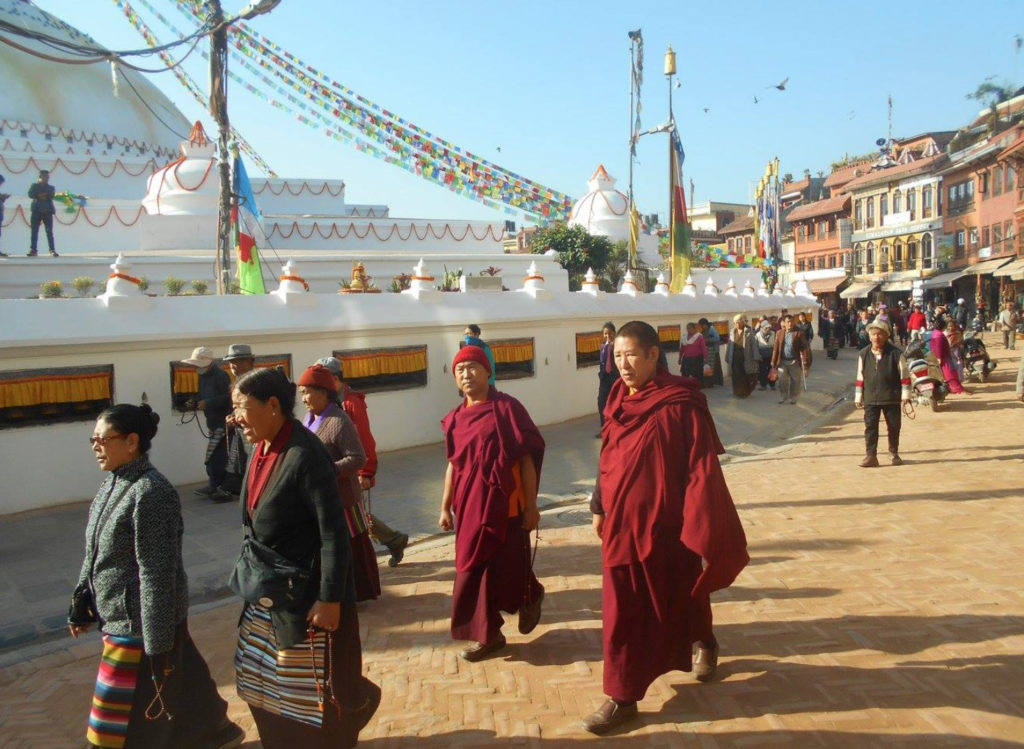
Q: Do you think if you had not started your business, this ancient tradition of painting these metal signs would have disappeared?
A: Sign painting has disappeared, except for me. I have hired 66 artists over the years and would rehire 44 of them, if I could find them and they were all still in business. Many have become truck drivers, farm workers in South Korea, mobile phone repairmen, electrical store owners, department store workers in Dubai.
Q: Is there one or two artists that have really affected you?
A: I really miss two of the artists I have worked with. Shree Lamachhane has left his family for the last three years to work on farms in South Korea where he makes $1100 a month. This makes the sacrifice worth it to Shree and his family. His artwork was stunning and very folk art – a style that I truly love.
Hari Timesina left two years ago to work in Saudi Arabia, working in construction. He lost his studio when the Kathmandu government had a street widening project, tearing six feet off the front of his twelve-foot deep studio. This made getting customers impossible for him. The street widening project really changed the landscape of Kathmandu and not always for the better. Many of the lovely old signs were tossed away and replaced by flex plastic signage. This helped the artists in the short term, but destroyed the folk art signs that I loved so much. Hari’s style was very innocent and unique.
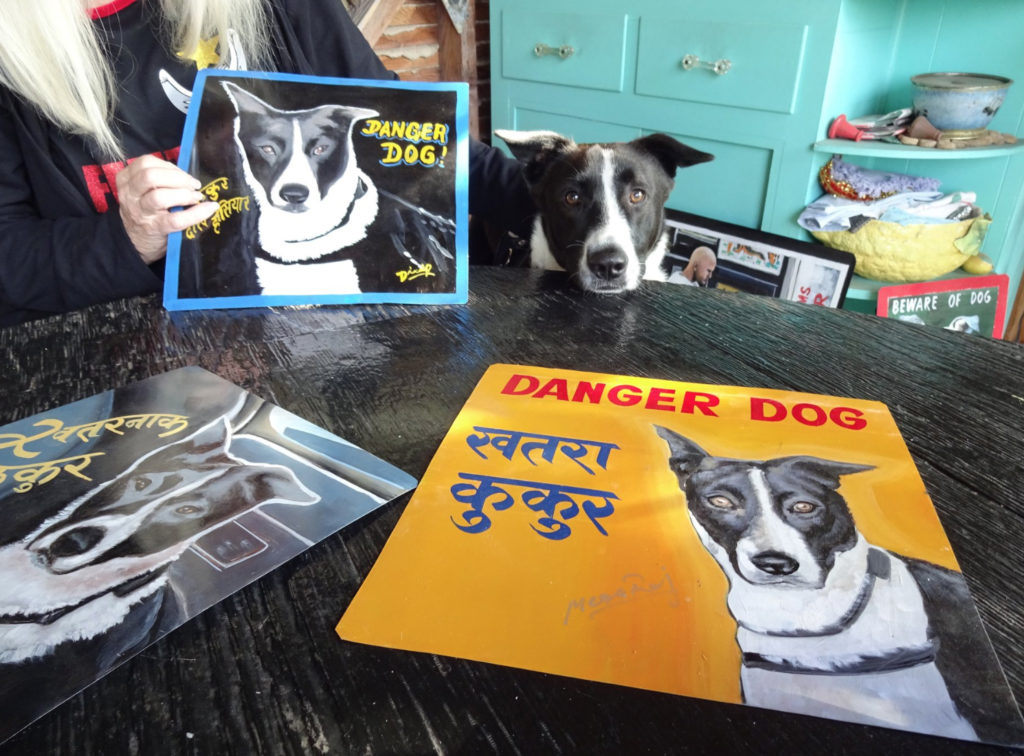
Q: I know you were there during the 2015 earthquake. How is Nepal now?
A: There has been some progress after the May 2015 earthquake. It was frightening and many people slept outdoors for months and even years afterwards. Many homes have not yet been rebuilt even three years later.
Q: I know you have been visiting Nepal for quite some time, are you still enamored by it?
A: I first went to Nepal in 1986, when Kathmandu was known as the Valley of Temples. It was paradise in that you would see the mountains from my guest house’s rooftop. I fell in love with the people, the bustle, the food. Though it has changed over the years, it is still a wonderland of temples.
Q: What do you love most about the locals?
A: Nepalis are unfailingly polite and very well dressed. Many still wear traditional clothing, though this is changing somewhat with the younger generation. They have very close family units and watch each other’s back. They are a good looking people and even without running water, they are clean and care about their appearance.
Q: Why do you think travel is important for all people?
A: What I love about travel is that you become like a child. All is new to you, the sights, the smells, the language and you cannot even read! Time stretches out and every day becomes an adventure.
To find out more about Danger Dogs of Nepal or Michelle Page, visit https://nepaldog.com/



